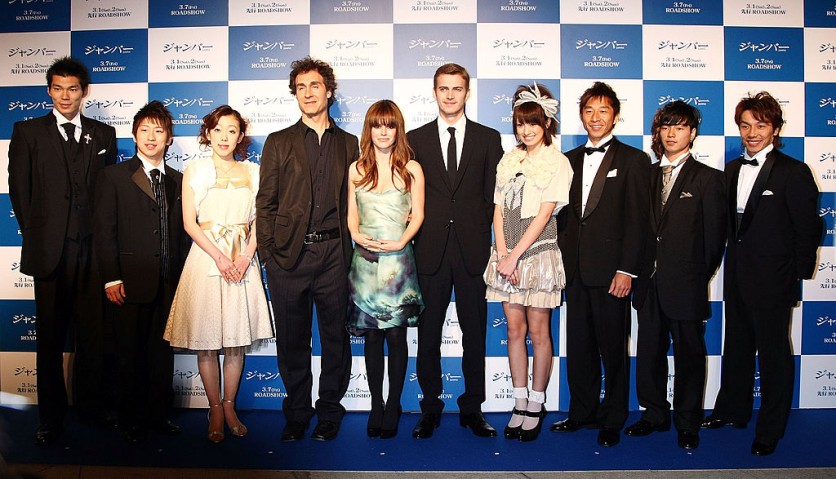The science fiction film, "Jumper," released in 2008, delves into the captivating idea of teleportation. The movie revolves around David Rice, portrayed by Hayden Christensen, who discovers the extraordinary ability to instantly teleport to any location he can visualize.
As we immerse ourselves in this fantasy world, it inevitably sparks curiosity about the feasibility of teleportation in real life. The concept of teleportation has fascinated humanity for centuries, featuring prominently in science fiction literature and films like "Star Trek."
It involves the transfer of matter or information from one point to another without physically traversing the space between. While "Jumper" offers a thrilling adventure with its teleporting protagonist, the film raises interesting questions about the real-life viability of such technology.
In the movie, teleportation is depicted as an innate power few individuals possess. However, in the real world, teleportation, as portrayed in this movie, is currently far beyond our scientific capabilities.
Teleporting physical objects would require a profound understanding of quantum mechanics, an area of science that remains largely uncharted.

Teleportation? Science Says It's Possible
The connection between teleportation and quantum physics lies in the concept of quantum entanglement. Quantum physics, also known as quantum mechanics, is the branch of physics that deals with the behavior of matter and energy at the smallest scales, such as atoms and subatomic particles.
It is a highly successful theory that has been experimentally confirmed and is used to explain phenomena that classical physics cannot account for.
Quantum entanglement is a phenomenon where two or more particles become correlated in such a way that the state of one particle is dependent on the state of another, regardless of the distance between them.
That means that if you observe the state of one entangled particle, you instantly know the state of the other, no matter how far apart they are. Teleportation, as portrayed in science fiction movies, involves instant transferring matter or information from one location to another without physically traversing the space between.
While teleportation in movies like "Jumper" might be fictional and not grounded in quantum physics, the concept of quantum teleportation is indeed based on quantum entanglement.
In the context of quantum teleportation, researchers have demonstrated the ability to transfer the quantum state of one particle (such as a photon) to another distant entangled particle. This transfer occurs without any physical transfer of the particle itself.
The process typically involves three particles: the original particle to be teleported (A), the particle at the destination where the information is to be transferred (B), and a third entangled particle (C) shared between A and B.
Moreover, the implications of teleportation in "Jumper" seem to overlook the fundamental laws of physics. Conservation of energy and momentum are significant barriers to teleportation in real life. When David Rice teleports, he seemingly violates these principles, as he appears to maintain his velocity relative to the Earth's surface.
In reality, to teleport without crashing into the Earth at his destination, his speed would need to be adjusted, which raises complex problems in terms of energy requirements and the necessity of an external reference point.
At present, scientists can only teleport information between subatomic particles over very short distances, which is a long way from the teleportation portrayed in the movie.
However, just this year, according to Phys.org, a team led by Prof. Guo Guangcan from the Chinese Academy of Sciences (CAS) successfully prepared the world's highest fidelity 32-dimensional quantum entanglement, the effective transmission of high-dimensional entanglement over 11 kilometers of optical fiber, and the development of efficient techniques for quantum entanglement detection. So it is possible, but not the kind of teleportation shown in the movie.
Teleportation Impacts Many Aspects of Life
Additionally, the notion of teleporting to any place on Earth, as demonstrated in "Jumper," introduces challenges related to Earth's rotation and orbit. If a person teleported from one location to another, they would find themselves displaced due to the Earth's motion, potentially resulting in a catastrophic scenario.
Overcoming these challenges would necessitate not only a profound understanding of physics but also an ability to manipulate space-time on a grand scale, something far beyond our current scientific capabilities.
The teleportation depicted in "Jumper" also raises ethical questions. If teleportation were possible, it could have significant implications for transportation, logistics, and even warfare. Governments and corporations might exploit this technology to their advantage, raising concerns about privacy, security, and the fair distribution of resources.
While "Jumper" offers a thrilling and imaginative take on teleportation, it remains grounded in the realm of science fiction. The movie's portrayal of teleportation provides an entertaining escape from reality, allowing audiences to indulge in the idea of instant travel and superhuman abilities.
Nevertheless, the film serves as a reminder of the vast gulf that exists between our current understanding of physics and the fantastical world of teleportation.
Related Article : Scientists Teleport Particles To Space: Will Human Teleportation Become Possible In The Future?

ⓒ 2025 TECHTIMES.com All rights reserved. Do not reproduce without permission.




